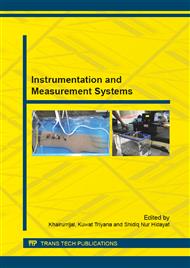p.55
p.59
p.63
p.68
p.72
p.76
p.80
p.84
p.88
Prototype of Photometric Stereo System Using 6 and 9 LED Light Source to Reconstruct Human Skin Texture
Abstract:
A quantification of skin surface is one of challenging problem which is required in skin health assessment and efficacy evaluation of cosmetic products. Due to limitations of direct visual assessment of skin microscopic topography, an optical dermastocopy is commonly used as skin imaging device to magnify skin topography based on a white light reflection. The limitation of this method is its poor spatial resolution to quantify skin topography. In this paper, a skin imaging based on photometric stereo is proposed to visualize microscopic topography of human skin. The prototype was developed based on modification of illumination source system on the digital microscope. The illumination system consists of 6 and 9 super-bright LED. Additional electronic circuit was integrated with illumination system in order to control LED so that it can light successively. After that, set of images acquired in different angle of illumination was recorded. All images will be reconstructed using software to obtain stereo images, which shows the depth of the surface. Implementation on skin surface profile performed on three test areas: the back of the hand and knuckle creases. Based on qualitative analysis, our proposed scheme of skin imaging based on photometric stereo is promising for surface profile measurement and imaging of the skin.
Info:
Periodical:
Pages:
72-75
Citation:
Online since:
July 2015
Authors:
Keywords:
Price:
Сopyright:
© 2015 Trans Tech Publications Ltd. All Rights Reserved
Share:
Citation:


